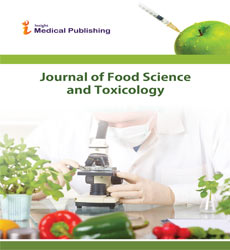Proteomic Analysis to Salinity Stress at Seedling Stage in Pigeonpea (Cajanus cajan)
Abstract
Pigeonpea (Cajanus cajan) is an important crop in semi-arid regions and a significant source of dietary protein in India. The plant is sensitive to salinity stress, which adversely affects its productivity. Based on the dosage-dependent influence of salinity stress on the growth and ion contents in the young seedlings of pigeonpea, a comparative proteome analysis of control and salt stressed (150 mM NaCl) plants was conducted using 7 days-old seedlings. Among various amino acids, serine, aspartate, and asparagine were the amino acids that showed increment in the root, whereas serine, aspartate, and phenylalanine showed an upward trend in shoots under salt stress. Furthermore, a label-free and gel-free comparative Q-Tof, Liquid Chromatography-Mass spectrometry (LC-MS) revealed total of 118 differentially abundant proteins in roots and shoots with and without salt stress conditions. Proteins related to DNAbinding with one finger (Dof) transcription factor family and glycine betaine (GB) biosynthesis were differentially expressed in the shoot and root of the salinity-stressed seedlings. Exogenous application of choline on GB accumulation under salt stress showed the increase of GB pathway in C. cajan. Gene expression analysis for differentially abundant proteins revealed the higher induction of ethanolamine kinase (CcEthKin), choline-phosphate cytidylyltransferase 1-like (CcChoPh), serine hydroxymethyltransferase (CcSHMT) and DNA-binding protein with one zinc finger (CcDof29). The results indicate the importance of choline precursor, serine biosynthetic pathways, and DNA-binding protein with one zinc finger
Open Access Journals
- Aquaculture & Veterinary Science
- Chemistry & Chemical Sciences
- Clinical Sciences
- Engineering
- General Science
- Genetics & Molecular Biology
- Health Care & Nursing
- Immunology & Microbiology
- Materials Science
- Mathematics & Physics
- Medical Sciences
- Neurology & Psychiatry
- Oncology & Cancer Science
- Pharmaceutical Sciences
